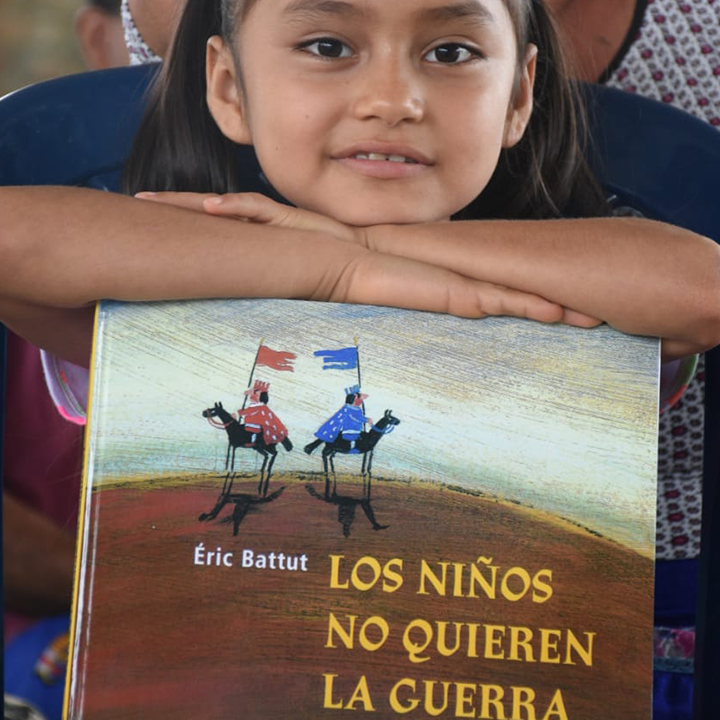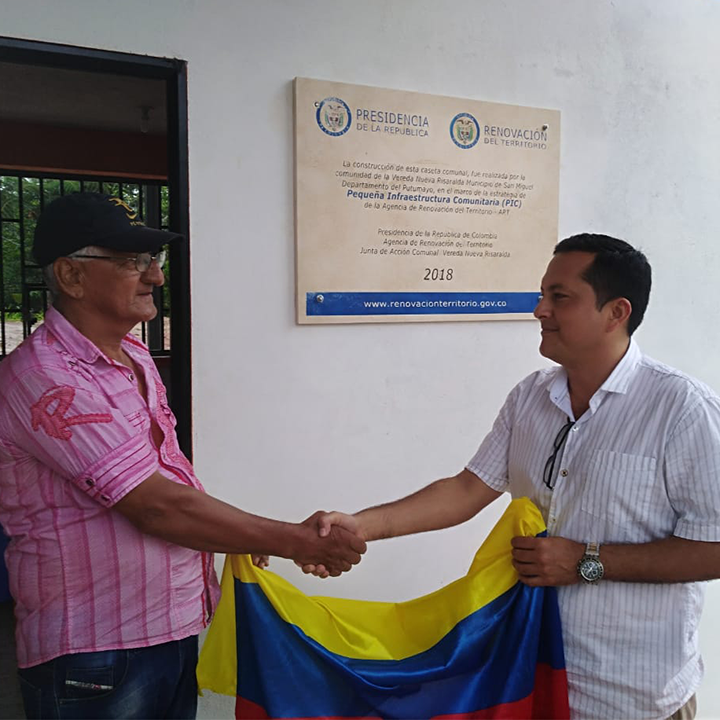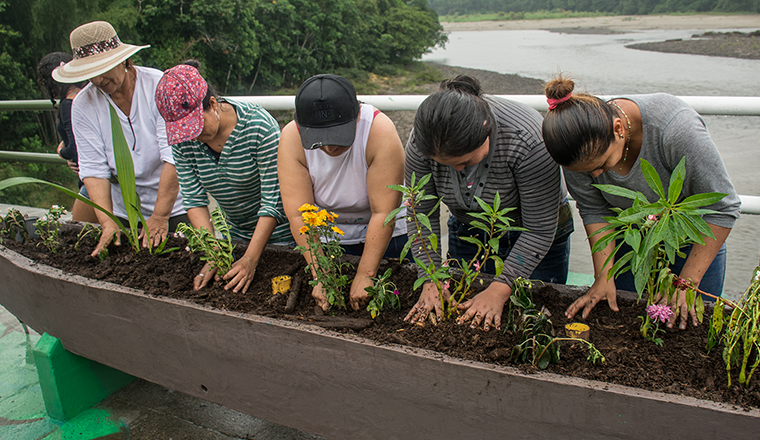

Since the publication of this blog, MSI, A Tetra Tech Company, was awarded a 32-month follow-on contract to continue advancing the peace process in Colombia.
I’ve tracked recent news on the conflict “transition” in Colombia. Nearly all of it since the no vote on the 2016 plebiscite for the initial Havana Peace Agreement with the FARC has charted a set of limited narratives:
1) The historic Peace Agreement is failing and the government has not followed through on its promises; 2) The Peace Agreement was a sham because ex-FARC combatants continue “delinquiendo” (being involved in illicit activities and violence); 3) A complete peace is impossible without taking a hard line on coca cultivation, trafficking and criminal groups; 4) The crisis in Venezuela is spilling across the border, threatening Colombia´s stability, and it may derail the delicate transition to peace.
Without a doubt, each narrative rightly sounds the alarms regarding a set of real threats that must be dealt with swiftly and effectively. However, I strongly believe that if we take each narrative on its own, we miss the opportunity to gain a more nuanced understanding of this crucial period in Colombia´s struggle to consolidate stability and peace.
To start delving deeper (and foster a truer to life understanding), it’s good to take stock of Peace Agreement implementation progress since 2016, to look at how peace agreements function (and do not), and examine the political climate as well as priorities for action.
Tangible Change Is Happening
Despite modest media coverage, what Colombian citizens, government and cooperation with donors have accomplished since 2016 is remarkable. It’s particularly so considering the scale and complexity of the 50 year conflict in which 262,187 people lost their lives.
Now more than ever, I feel it is vitally important to tell the stories, share the statistics and make accomplishments visible to Colombians and the international community in order to put some of the worrisome headlines into context.
While there have been delays and challenges, a recent monitoring and verification report prepared by the reputable University of Notre Dame Kroc Center on Conflict highlights that 69% of the commitments outlined in the Peace Agreement have made progress and 35% have been fully implemented to date.
The evidence speaks for itself: the FARC have transitioned from an armed group to a political party; over 6,000 combatants have demobilized and are integrating into civilian life; robust Peace Agreement monitoring and verification measures have been enacted with UN support; a Truth Commission and Special Jurisdiction for Peace (JEP) have been established and are functioning in fits and starts despite political attacks; special legislative measures have created the institutional mechanisms to begin implementing Agreement Point 1 and the complex integrated rural reform process.
Between 2018 and 2019, the Colombian government spearheaded the largest participatory planning process in the history of the country, resulting in 16 action plans for territorial transformation (known as PDETs – Territorial Focused Development Plans) covering 170 of the municipalities most affected by armed conflict in order to prioritize investments and peace-building support. Aside from beginning to build a foundation of trust, and collaboration and capacity among stakeholders long divided by the entrenched conflict, the peace negotiation and Agreement implementation have had concrete impacts on security despite in-fighting between the ELN and criminal groups.
According to stats from the National Police, in 2012 before the start of formal peace talks in Havana, there were 634 acts of terrorism, while only 121 in 2018. Homicides also dropped from 16,032 to 12,575 and kidnapping dropped from 305 to 94 cases.
During my work as Chief of Party with the USAID/Office of Transition Initiatives-funded Colombia Transforma project, our field teams and the Secretary of Education in Putumayo have seen rural school enrollment increase by 43% as parents are now less fearful of their children falling prey to recruitment or being caught in the crossfire. In zones where it was unthinkable before the 2016 Peace Agreement, citizens are getting out and exploring their regions for the first time, while registration of new retail and tourism businesses in zones affected by armed conflict (ZOMAC) increased by 30% between 2015 and2017, according to the Center for International Private Enterprise (CIPE).
What is more, citizens are actively participating in small community infrastructure projects with the Agency for Territorial Renewal (ART). Over 606 of 1,198 projects – Obras PDET – have been completed to date, empowering community members to administer resources while addressing critical needs, building trust and partnership with government.
Peace Agreement Is Not Peace
How we measure the “success” of the Peace Agreement in Colombia is intrinsically linked to how we frame it. Monitoring, verifying, and quantitatively and qualitatively measuring the progress I mentioned above, are indispensable steps. However, we must not lose sight of the fact that the final Peace Agreement signed in 2016 merely marked the start of a process with multiple phases that must transform the fundamental underlying historic causes and current drivers of the conflict.
Even though many would like to believe otherwise, FARC leaders and President Santos´ signing of the final Peace Agreement in the Colon Theater in Bogota did not, and will not create peace per se. Rather, it ended armed confrontation with the largest and oldest armed group, established the initial conditions and a structured an imperfect road map to guide the process forward over the next 10 to20 years to achieve stability and eventual sustainable peace.
As the Colombia Transforma team, communities and government stakeholders have discovered, peace takes partnership built on hard work, quickly seizing fleeting opportunities, as well as coordination, political will, and patience. In John Paul Lederach´s words, we must embrace “leaps of faith” and the belief that “the unexpected is possible” beyond entrenched conflict patterns of the past and current threats.
Destabilizing Factors Will Be A Constant
Granted, stark realities persist regarding deep political polarization around the Peace Agreement – particularly regarding transitional justice – in the halls of government and at dinner tables across the country. Family and friends outside of Colombia often ask me whether the transition from Nobel Peace Prize winner, President Santos, to right-leaning Duque caused set-backs in Peace Agreement implementation. I respond by saying “both yes and no”, in that the political discourse has shifted fundamentally from peace and reconciliation to stabilization and security, while the primary content and implementation mechanisms outlined in the Agreement have remained largely intact. Thankfully…for now.
That being said, even if Peace Agreement implementation were to be carried out completely and effectively, sustainable peace and full cessation of violence will remain elusive as long the spoilers and destabilizing factors are not taken on simultaneously with Agreement implementation. The ELN and criminal groups continue fighting in regions such as the Catatumbo and other critical corridors over control of illicit economies and territory left by the FARC. Meanwhile, there are no signs the Venezuelan political and migration crisis will be resolved anytime soon.
This Can Be Done
By digging deeper and ditching the limited narratives, clearer paths can appear in the quagmire. However, these paths will eventually lead to peace only if Colombians – all sectors – hold on tight and never let go.
Right now, I firmly believe this means quickly building on progress made to date in the territories by engaging citizens and expanding tangible peace dividends (infrastructure, investment, livelihoods, and services). This must be done in a sequenced and integrated manner, building the Colombian state within the territories with direct community participation and guarantees for citizen security.
Meanwhile, significant progress must be made dismantling criminal groups as well as integrating Venezuelan migrants as a cadre of human capital, as pure potential for supporting local development rather than as a burden. Easier said than done. The Colombian government at its three levels (national, regional and local) must follow through on the promises it made under the Peace Agreement while promoting acceptance of dialogue and reconciliation among citizens, led by the Truth Commission.
At least initial legislative mechanisms have established an operational platform with entities such as the High Council for Stabilization and the Agency for Territorial Renewal, which are finally reaching the most forgotten zones. Communities are also doing their part. Now if we can just leverage the patchwork of stakeholder capacities, political will among divided factions and raise citizen hope – just enough – to drive Colombia through the barbs of this next critical stretch towards Peace.

All views expressed in this blog do not necessarily reflect those of the US Government.